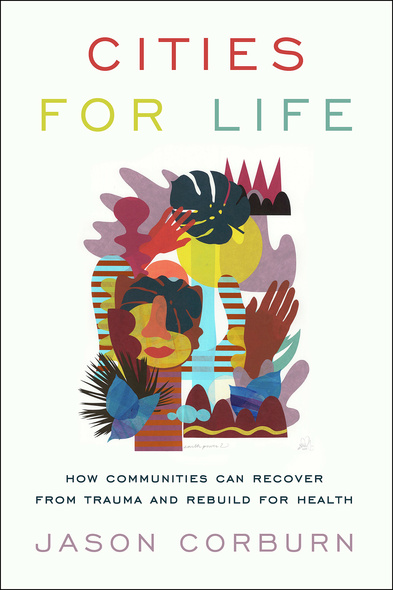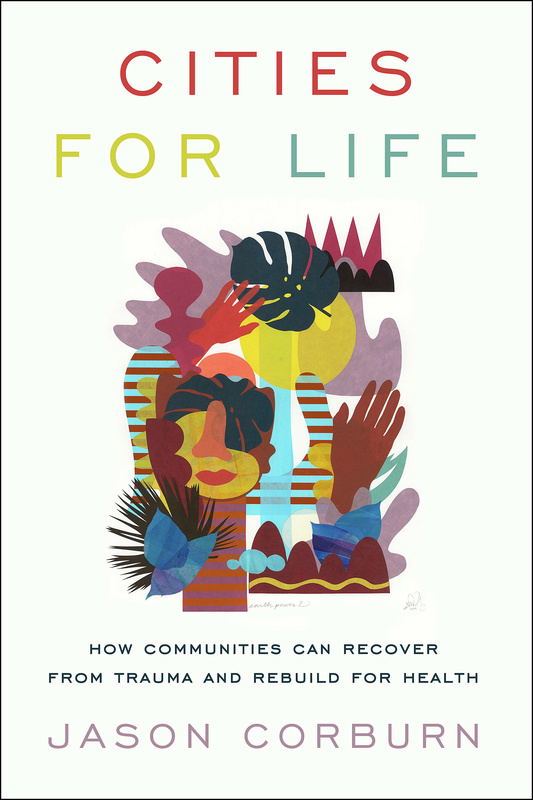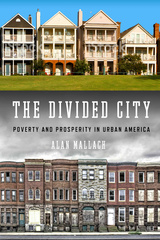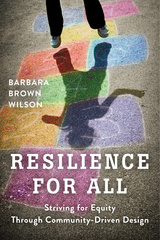Cities for Life
How Communities Can Recover from Trauma and Rebuild for Health
Island Press
Environmental Design Research Association (EDRA) Place Book Award Winner (2022)
What if cities around the world actively worked to promote the health and healing of all of their residents? Cities contribute to the traumas that cause unhealthy stress, with segregated neighborhoods, insecure housing, few playgrounds, environmental pollution, and unsafe streets, particularly for the poor and residents who are Black, Indigenous, and People of Color.
Some cities around the world are already helping their communities heal by investing more in peacemaking and parks than in policing; focusing on community decision-making instead of data surveillance; changing regulations to permit more libraries than liquor stores; and building more affordable housing than highways. These cities are declaring racism a public health and climate change crisis, and taking the lead in generating equitable outcomes.
In Cities for Life, public health expert Jason Corburn shares lessons from three of these cities: Richmond, California; Medellín, Colombia; and Nairobi, Kenya. Corburn draws from his work with citizens, activists, and decision-makers in these cities over a ten-year period, as individuals and communities worked to heal from trauma—from gun violence, housing and food insecurity, and poverty. Corburn shows how any community can rebuild their social institutions, practices, and policies to be more focused on healing and health. This means not only centering those most traumatized in decision-making, Corburn explains, but confronting historically discriminatory, exclusionary, and racist urban institutions, and promoting healing-focused practices, place-making, and public policies.
Cities for Life is essential reading for urban planning, design, healthcare, and public health professionals as they work to reverse entrenched institutional practices through new policies, rules, norms, and laws that address their damage and promote health and healing.
What if cities around the world actively worked to promote the health and healing of all of their residents? Cities contribute to the traumas that cause unhealthy stress, with segregated neighborhoods, insecure housing, few playgrounds, environmental pollution, and unsafe streets, particularly for the poor and residents who are Black, Indigenous, and People of Color.
Some cities around the world are already helping their communities heal by investing more in peacemaking and parks than in policing; focusing on community decision-making instead of data surveillance; changing regulations to permit more libraries than liquor stores; and building more affordable housing than highways. These cities are declaring racism a public health and climate change crisis, and taking the lead in generating equitable outcomes.
In Cities for Life, public health expert Jason Corburn shares lessons from three of these cities: Richmond, California; Medellín, Colombia; and Nairobi, Kenya. Corburn draws from his work with citizens, activists, and decision-makers in these cities over a ten-year period, as individuals and communities worked to heal from trauma—from gun violence, housing and food insecurity, and poverty. Corburn shows how any community can rebuild their social institutions, practices, and policies to be more focused on healing and health. This means not only centering those most traumatized in decision-making, Corburn explains, but confronting historically discriminatory, exclusionary, and racist urban institutions, and promoting healing-focused practices, place-making, and public policies.
Cities for Life is essential reading for urban planning, design, healthcare, and public health professionals as they work to reverse entrenched institutional practices through new policies, rules, norms, and laws that address their damage and promote health and healing.
Cities for Life is recommended reading for all who are trying to gain better insight into urban studies, urban governance and urban living, like academicians, practitioners, social scientists and researchers, and especially those with an interest in the relationship between urban governance and mental health or community recovery and realities of Inclusive Planning through a participatory approach.’
Corburn’s messaging that ‘human health happens in neighborhoods and communities not just in the doctor’s office’ is a crucial reckoning for the health equity movement. His focus on storytelling and historical place-making creates a compelling context for contemporary on-the-ground action. Cities for Life should be required reading for policymakers and activists in urban planning, public health, and environmental justice.
Corburn's holistic approach, supported by case studies of three very different cities in California, Colombia, and Kenya, provides background on how substantive and lasting changes can be engendered through a grassroots, citizen-centered project. Corburn's detailed descriptions of programs—for example, the Circumvent Garden Project in Medellín—offer a model for developing new projects. Undergraduates may embrace 'health equity into all policies (HiAP)' yet find that working to embed HiAP in their projects is difficult. Corburn's case study on Richmond, CA, documents the creation of a Food Policy Council to address HiAP strategy objectives. This is an important addition to libraries supporting programs in public health, public history, social work, and political science.
Corburn’s messaging that ‘human health happens in neighborhoods and communities not just in the doctor’s office’ is a crucial reckoning for the health equity movement. His focus on storytelling and historical place-making creates a compelling context for contemporary on-the-ground action. Cities for Life should be required reading for policymakers and activists in urban planning, public health, and environmental justice.
Cities for Life amplifies community voices, capacities, and rich local ingenuity that need to be harnessed and incorporated into policy and practice. Following the increasing urbanization of poverty and associated health losses, this book is a must read for researchers, students, policy makers and practitioners.
Jason Corburn is a professor in the Department of City and Regional Planning and the School of Public Health at UC Berkeley. He directs the Center for Global Healthy Cities and co-directs the joint Master of City Planning and Master of Public Health degree program. His books include Street Science, Toward the Healthy City, and Healthy City Planning.
Preface
Introduction: Designed for Life or Death
Box 1: Richmond, California: The Industrial City by the Bay
Box 2: Medellín, Colombia
Box 3: Nairobi, Kenya and the Mukuru Informal Settlement
Chapter 1: Cities for Trauma or Healing?
Chapter 2: Reducing Urban Violence through Street Love
Chapter 3: Slum Scientists Diagnosing Traumas
Chapter 4: Co-Creating Places for Urban Health and Healing
Chapter 5 –Resilience and Climate Justice in Medellín
Chapter 6. Putting Health Equity into all Urban Policies
Conclusion: Toward Cities that Heal
Endnotes
Index
About the Author
Introduction: Designed for Life or Death
Box 1: Richmond, California: The Industrial City by the Bay
Box 2: Medellín, Colombia
Box 3: Nairobi, Kenya and the Mukuru Informal Settlement
Chapter 1: Cities for Trauma or Healing?
Chapter 2: Reducing Urban Violence through Street Love
Chapter 3: Slum Scientists Diagnosing Traumas
Chapter 4: Co-Creating Places for Urban Health and Healing
Chapter 5 –Resilience and Climate Justice in Medellín
Chapter 6. Putting Health Equity into all Urban Policies
Conclusion: Toward Cities that Heal
Endnotes
Index
About the Author







